 mikan daifuku
mikan daifuku
The Japanese are sweet lovers. Now, all sorts of Western and Asian sweets can be found in big cities, and there are many talented bakers.
Wagashi means “Japanese sweets”, and it refers to the snack, usually sweet, served with tea. Eating desserts is not the custom. You eat lunch at 11~12 , then at 3 pm, you have a sweet with tea.
 murasaki hanamame
murasaki hanamame
The bulk of wagashi are made on a base of 2 ingredients : rice and azuki beans. And the artisans carve hundreds of refined designs -inspired by nature and seasonal events. So you may have the impression that they all taste the same and are only decorative. Actually, even in traditional shops, there exist many other flavors, sesame, roast soy beans, sweet potato, nuts, yuzu, chestnut, ume plum, cherry blossom, matcha, dry fruits, cassia cinnamon…
I have no ambition to compete in refinement of making with the famous shops. I have them on occasions, not too often as the quality ones are not cheap. Making my snacks is mostly a hobby and a way to avoid the supermarket range ones.
My home-made wagashi don’t always follow the traditional recipes, but I try to indicate when I adapt. Usually, I want mines to be less sweetened.

BASIC RECIPES FOR HOME-MADE WAGASHI
Sweet pastes
There are several sweet pastes called “an”.
“anko” the most common is made of red azuki beans. Other beans are used too, white for “shiro an”, and also red, yellow, black…
“kimi-an” is yellow and egg flavored. “kuri-an” is made with chestnut. Etc
Cooking azuki beans
Making anko (brown filling) from the beans. Tsubuan and koshian. Easy recipe.
Making kimi-an (yellow filling, with egg)
Rice, rice flour, processed rice flours
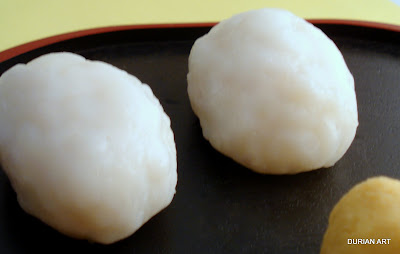
Making o-hagi, the basic wagashi (from rice)
Making daifuku mochi from mochiko (from mochi flour)
Making kashiwa-mochi (from joshinko rice flour)
Other flours
kuzu, kudzu :
kuzumochi
warabi (bracken) :
warabi mochi
agar agar :
tokoroten
Home-made wagashi
Autumn




Gold and Chestnut : kuri kinton
Kuri, the sweet (2nd style of kuri kinton)
Kinako-bo and mugi-cha
Polka-dot kabocha yokan




Making o-hagi
Mizu-yokan and nashi
After-Eight Daifuku Mochi
Choco-coco hari-nezumi
Winter




Zenzai
Azuki filled “sweet potato”
Mushi-pan
Ichigo daifuku mochi

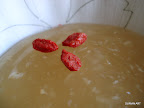
Zenzai with yaki-mochi
Ginger kuzu-yu
Spring


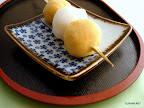

choco-chip matcha-an daifuku
Tokoroten cherry…
Kimi-an dango, Japanese sweets like pearls of gold
Tamago-chan, cute egg wagashi
Summer




Dango
Lemon snow-flake mochi
Mochinnamon bun
Cubes of refreshment : heart-heaven in black sweetness




Ubatama
Okinawan mochi
warabi mochi (classic recipe)
ichigo-dama (strawberry pearls)
Others



Setsubun (start of Spring festival)
Casual tea.
About wagashi and mochi from the shop… (Summer)
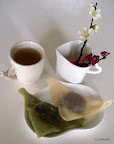
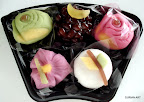
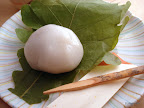
Yatsuhashi for sakura season (from the shop)
Assorted Spring wagashi (from the shop)
Kashiwa-mochi for Children Day, May 5th (from the shop)

 okaki mochi
okaki mochi
 noshi mochi
noshi mochi
Other dessert compilations :
 Crazy and Healthy Sweets (compilation)
Crazy and Healthy Sweets (compilation)
 French desserts – Dessert francais (compilation)
French desserts – Dessert francais (compilation)
Snow-ball ? Hedgehog ? Lawn ? Well this is my version of a wagashi (Japanese sweet) popular in this season in Kansai. I don't know the name – so many varieties exist, not all are named. It's often yuzu-mochi. Usually it's flavored with yuzu citrus. Mine is made with Meyer lemon. So "lemon snow-flake mochi" ? Mine look really gross compared to what the artisans make. BUT, it tastes much better than the supermarket version. And I know how to improv … Read More



